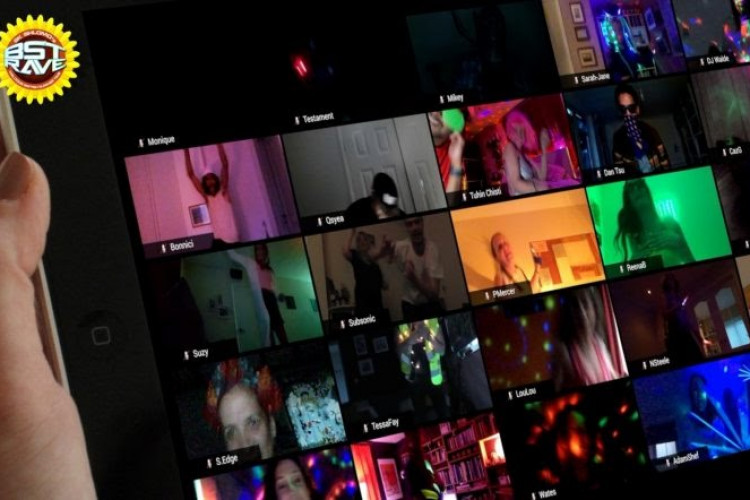


















Located at 379 Ahmad Yani Street, Solo, Lokananta seems like it’s just an old abandoned building. The only thing that might catch the eye of a passerby is its signage. A name given by the former head of national radio Radio Republik Indonesia (RRI), Raden Maladi (who was also an Indonesian sports icon as well as minister), Lokananta can be translated as “gamelan sounds from heaven”, which summarizes what “Lokananta” was: A recording studio which was “heaven” primarily for recording gamelan music. Being the first Indonesian recording studio in 1933, Lokananta was designated for archiving radio transcription and producing vinyl, phonograph records and audio cassettes. And it is celestial because of the then state-of-the-art Trident Series 80B mixer and UREI 801 speaker, rumoured to be one of the only two ever produced in the world.
Looking rather dull for its reputation, some areas are covered in dust, but the amp is still there. Not to mention, the recording room with its magical acoustics is still there. Built the size of a futsal field, the recording room is a sight to behold. The wall and the roof are elegantly covered in wood, which reflect some of its glorious days.
The recording company has over 40,000 recordings, which include some 5,200 commercial labels in its collection. Lokananta also has the biggest collection of keroncong and gamelan orchestra recordings (Javanese, Balinese, Sundanese, even Bataknese), along with the first recorded speeches of Indonesia’s first president Soekarno and the original version of the national anthem. Gesang, Titik Puspa, Wajinah, Idris Sardi, Ismail Marzuki, Bubi Chen, Jack Lesmana, and Bing Slamet are a few of many legendary artists whose recorded their music on Lokananta.
Unfortunately, those glory days are over. Struck with monetary crisis and piracy since the late 90’s, Lokananta officially declared bankrupt in 2000, before being liquidated in 2001. The maintenance fee of the studio cost more than what it could earn so they did everything necessary to save the studio.
At one time, Lokananta had to dismiss hundreds of their employees. It is also reported that the air conditioner in the storage room where the music is archived were poorly functioning, damaging some of the records because of the unstable humidity. One of the saddest occurrences in their plight to maintain Lokananta was their selling of working recording tools and records. Desperately selling the 1940’s Petrof Grand Piano for only 10 million rupiahs (1000 USD), where it is valued at more than 15,000 USD on eBay today. What’s left are the dusty famous amplifiers and a few remaining records.
The weakening sales in the music industry are one of the main reasons for Lokananta’s decline. Trouble within the recording company’s management is another. Through out the years, Lokananta has been passed from one department to another. From being a state corporation on its early days, passed to the national department of information in the 80’s, then passed to PNRI (national printing corporation) in early 2000. When the ministry of education and culture finally paid attention to the studio and suggested revitalizing Lokananta as an Indonesian Museum of Music, the convoluted bureaucracy stopped them. Due to an unclear mailing system and miscommunication between the departments, the idea fell apart.
Lokananta has made revitalization efforts, and it is not alone in doing so. Its magical history drew the attention of the Indonesian music scene. Some efforts have already been made: the hashtag #sahabatlokananta became a trending topic in late 2012 before becoming a fund raising tribute concert held across 11 towns around Sumatra, Java, Bali and Sulawesi. On top of that, some of Indonesia’s finest musicians, such as Glen Fredly, White Shoes and the Couples Company, and Pandai Besi, recorded their material there. All of those efforts resulting good outcomes: the musician produce a good record thanks to the studio’s atmosphere.
These attempts to give new strength to the legendary recording studio does raise the issue of sustainability. The campaign effort might help Lokananta gain some attention and funds, but for how long? These efforts drew attention, so it is now a matter of preserving, maintaining, and creating something meaningful from it.
The last thing this revitalization effort needs is instant attention, which will disappear as fast as it appeared – an awareness gliding through mass hysteria. To quote Jack Kerouac, “Great things are not accomplished by those who yield to trends and fads and popular opinion.”
Not saying that making tribute concert and making records in the studio is a waste of time. That attempt, especially making records in the studio again, is a great way to revive the studio. But it needs to be continuous and consistent to make Lokananta really worthy of revitalization – Simply not just an on and off thing.
To this day, Lokananta is still trying to rejuvenate its image to those glorious days. The ministry of education and culture is still trying to revitalize the idea of Indonesian Museum of Music, and hopefully the idea will be realized in 2015. The studio is still available to book for recording. They also offer cassette duplication service which is increasing due to the audio tape revival.
Now, Lokananta is home to 19 workers and they built a futsal field, along with a soto stall that are the top contributor to Lokananta’s revenue at the moment – which is ironic because one of the studio staff said that when asking local teenagers what they know Lokananta, they refer to it as a futsal field.
The hope is there as long as the revitalization process doesn’t lose its energy to fix the tarnished studio that brought the divine into Indonesian music – to bring back what the Lokananta name deserves: honor.



